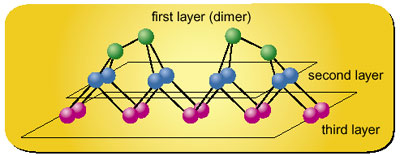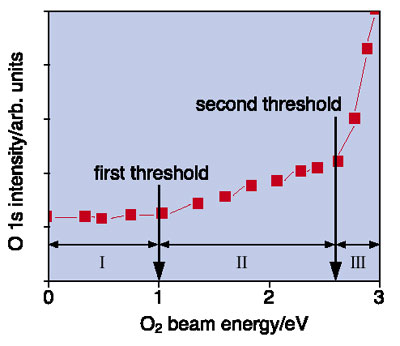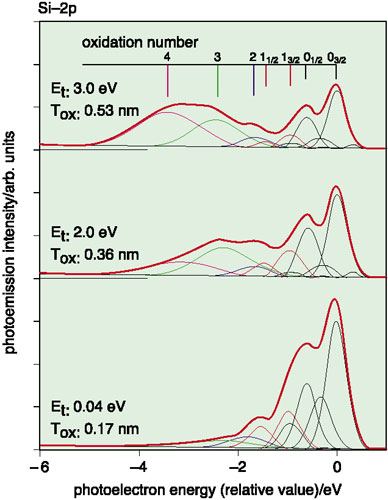Field effect transistors (FET's) play an important role in silicon-based LSI technology. With the rapidly decreasing scale of device integration, the thickness of silicon-oxide layers as gate insulators in FET's will be required to be as small as 1 nm in the near future. Therefore, precise control of oxidation effects on Si(001) surfaces is an important subject in the development of ULSI's as well as for surface science.
The surface reaction analysis apparatus (SUREAC2000), which has been installed on a soft X-ray beamline at SPring-8, employs beams of O2 molecules with controlled kinetic energy Et. Irradiation with energetic O2 beams, i.e., having a speed ~10 times larger than that in air, has resulted in the formation of ultra-thin oxide layers with maximum thickness 0.5 nm on Si(001) surfaces at room temperature (Fig. 8-9), and the maximum thickness has been found to be dependent on Et. The kinetic energy threshold in the oxidation process predicted by a first-principles molecular dynamics calculation has been verified experimentally for the first time (Fig. 8-10). Using photoemission spectroscopy with high energy resolution synchrotron radiation, it has been also revealed that the degree of oxidation increases with an increase in Et (Fig. 8-11).
Photoemission spectroscopy using intense synchrotron radiation has been successfully applied to real-time in-situ analyses of the state of oxidation during the reaction. Irradiation with supersonic O2 beams has been found to be an effective means to control the oxidation process on the Si(001) surface. It is expected that this method will be useful for the control of oxidation on metal surfaces as well. |



